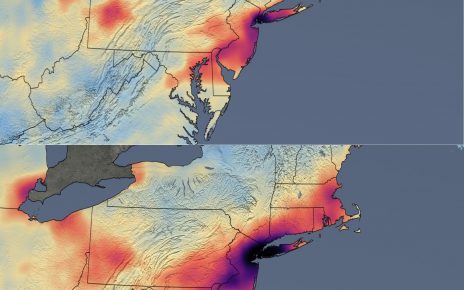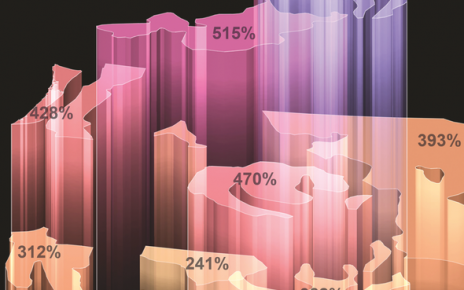Many machines can recognize humans by their fingerprints or facial features. These biometric traits are not the only ones that set individuals apart, however. Each person’s walking gait is unique—and they can serve not only as identifiers but also as indicators of mood and health. A team of researchers has now developed remote sensors that analyze footsteps by measuring minute floor vibrations. They have used those vibrations to identify specific individuals walking through a building and to test a new method of hands-off health monitoring.
The way someone walks is “like a fingerprint—it’s like a very unique signature of yourself,” says Hae Young Noh, who initially performed the research as an electrical and computer engineer at Carnegie Mellon University and has since moved to Stanford University. It can reveal “who you are, where you are, what kinds of activities you’re doing or even your cognitive state.” If hardware sensors detect a pattern of footsteps, software can analyze them to verify an individual’s identity. Similar systems have done so with 95 percent accuracy, says Vir Phoha, a professor of electrical engineering and computer science at Syracuse University, who was not involved in the new work.
And walking patterns can be more than a simple ID. “There is a lot of information you can learn from a person’s gait—specifically, health-related information,” Phoha says. If somebody starts placing more weight on one side or another, for example, the change in balance could indicate a neurological problem. This information could help doctors monitor seniors and other at-risk patients who want to live independently: tracking subjects’ gait could keep tabs on their health without directly impinging on their space.
To measure this data-rich signature, researchers previously had to outfit subjects with wearable devices or have them walk on special mats or altered flooring. But Noh, electrical and computer engineer Pei Zhang of Carnegie Mellon and their colleagues decided to develop footstep sensors that would work remotely. The scientists took advantage of the fact that typical walls and floors pick up even faint vibrations from activity in the space they contain. “We call this ‘structures as sensors,’ where we’re using these big physical structures like buildings and bridges as a sensing system to indirectly monitor humans and surrounding environments,” Noh says.
Sensing vibrations from a mere footstep requires extremely sharp detectors. “To give you an idea how sensitive our sensors are: when you sit in the chair a meter away, we put the sensor on the ground,” Zhang says, and “we can sense your heartbeat.” Each sensor—a cylindrical device with height of a few centimeters—sits on the floor and can pick up a walker at a distance of up to 20 meters, Noh says. The researchers distribute such sensors as an array throughout the area where they want to detect footsteps. But in a busy building, such acute detectors would pick up a lot more. Thus, the team also had to “teach” the new system to distinguish these signals from any background noise.
“Fighting the noise is the biggest challenge we have,” Noh says, and addressing it required both hardware and software solutions. On the hardware side, each sensor has an amplifier that can automatically change the amount of a footstep vibration it boosts. When one seems to be coming from farther away, the amplifier turns it up. As the signal gets stronger and threatens to overwhelm the sensor, the amplifier decreases its sensitivity. Noh likens this process to remotely controlling the volume of a speaker: listeners make it louder when they are farther away in order to hear better, but as they get closer, and the sound becomes too intense, they dial it down.
Once the sensors have picked up a footstep, the software takes over. “We do various signal-processing and machine-learning [techniques] to learn what is the human-related signal versus other noise that we’re not interested in,” Noh says. Like the data from other footstep-detection methods (such as wearables or pressure mats), walking patterns measured with these sensors can be used to determine an individual’s identity and some kinds of potential health issues. The team has presented its work at several conferences and seminars—most recently at the Society for Experimental Mechanics’ It’s Not Just Modal Anymore conference in February.
The way the system displays walkers’ behavior live on a computer monitor made one researcher think of a more fantastical device. Eve Schooler, principal engineer and director of emerging Internet of Things networks at Intel, says she was interested in creating a technological version of the “Marauder’s Map”—a magical floor plan in the Harry Potter book and film series that “uses footsteps to visually portray where people are.” In the real world, such a device might track a building’s occupants and other objects in real time. Inspired by Schooler’s suggestion, the Carnegie Mellon team made its own iteration, creating a digital display that shows footprints appearing on a floor plan with the appearance of the magical paper map.
The fictional Marauder’s Map only portrayed one location, but the researchers’ portable footstep sensors could be used in any building, Schooler notes. “Some of the algorithms that they’ve developed make the result transferable, which is what’s so interesting,” she says. “You don’t have to do all this calibration to figure out people’s signature across buildings—they have the techniques to do that for you.” Once the experimental system “learned” a person’s signature gait, the sensor array could recognize that individual at the office or home. Given the devices’ affordability—Noh estimates each would cost about $10 to $20 to produce—and the fact that they can be placed every 20 meters to create an image of an entire floor—the wide range of applications Schooler suggests indeed seem possible.
The ability to conduct this kind of monitoring raises obvious privacy concerns, and the researchers only suggest their technology should be used for consensual health care applications. Such monitoring systems, they note, can help caregivers who need to know when elderly patients might be likely to fall—or children’s hospitals that want to detect the telltale signs of chronic diseases, such as muscular dystrophy, as soon as possible. For those examples, developers assert, footstep sensors would preserve privacy better than, say, a camera that also captures visual information. “This is actually created because of the privacy concerns of the other type of monitoring mechanisms,” Zhang says. And in health-related scenarios, he adds, “I’m willing to trade off a little bit of my data information to prevent falls and to detect diseases.”



